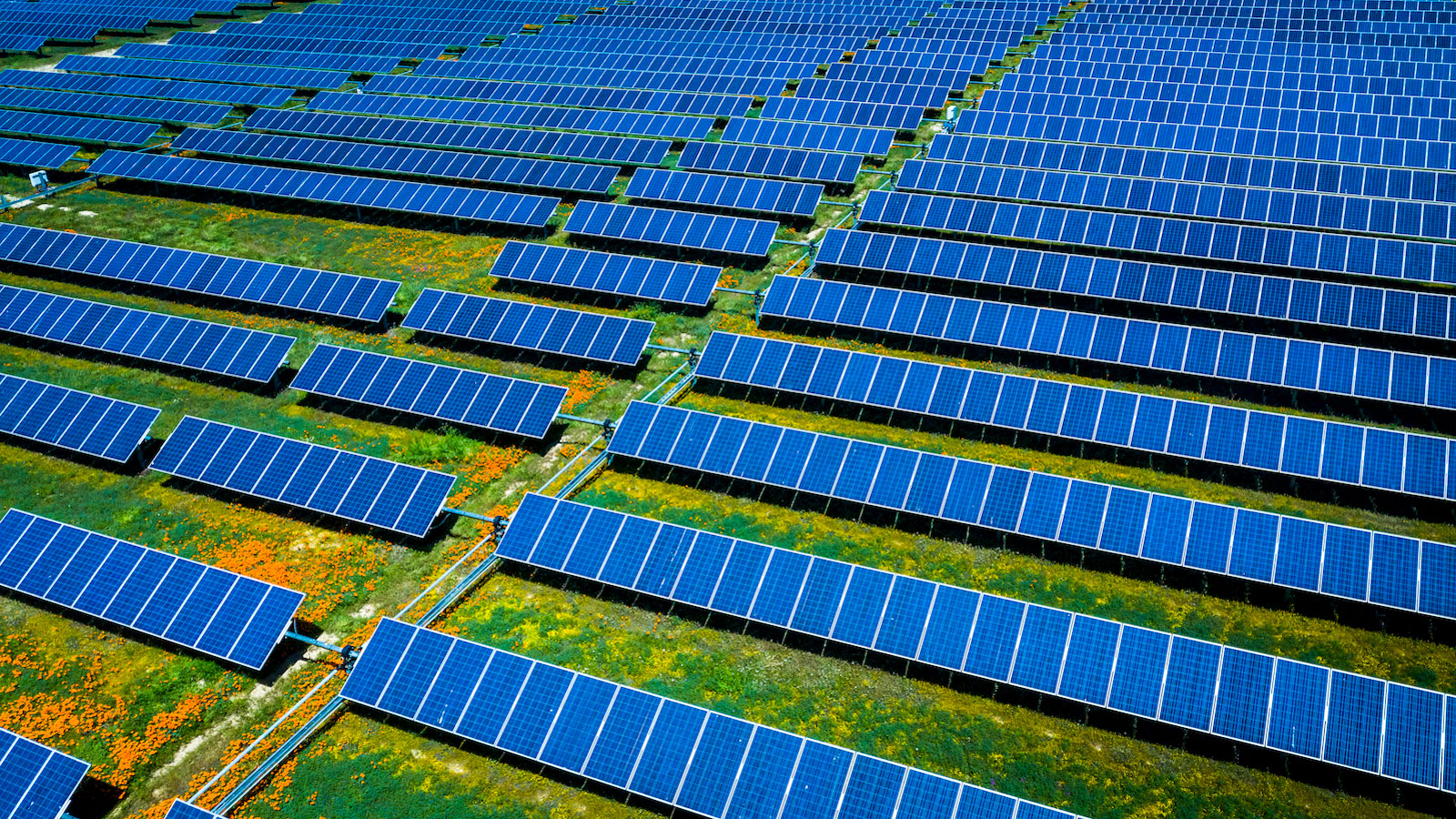Last year, only about 3 percent of U.S. electricity came from solar power. By 2050, market forces and government policies could increase that fraction 15-fold.
A report unveiled on Wednesday by the Department of Energy, or DOE, outlines a path that would dramatically increase the U.S.’s use of solar power, with nearly half of the nation’s electricity coming from the sun by midcentury. It’s aligned with the administration’s efforts to beat back the threat of climate change, which the president has called the “number one issue facing humanity.”
According to the report, called the “Solar Futures Study,” the rapid deployment of solar panels and related technologies could put the U.S. on track to achieve 40 percent solar electricity by 2035 and 45 percent by 2050. Such a massive undertaking would transform the nation’s energy infrastructure — and require a lot of work.
“Achieving this bright future requires a massive and equitable deployment of renewable energy,” said Jennifer Granholm, the U.S. Secretary of Energy, in a press release. Under the DOE’s blueprint, the country would need to install 30 gigawatts of new solar capacity every year for the next four years — enough to power almost 6 million homes, and double the record-breaking 15 gigawatts that it brought online in 2020. Then it would need to double that number again, installing 60 gigawatts each year until 2030.
The DOE also said that new technologies to store and transmit renewable energy could help expand solar power to “all pockets of America” without compromising reliability or raising energy prices, and that its solar blueprint could create as many as 1.5 million jobs. Plus, the report said, the hundreds of billions of dollars of public and private investment needed to achieve the projected solar growth would be more than offset by avoided damages from climate change and improvements to air quality, which would create $1.7 trillion in net savings.
But the scale of the challenge is considerable. Although falling costs and better technologies have helped solar boom — the sector has grown 4,000 percent over the past decade — as of 2020, renewables contributed only 20 percent of the nation’s electricity, while fossil fuels provided 60 percent. (Nuclear reactors, batteries, and various other non-fossil fuels provided the rest.) According to the DOE, its solar plan is only feasible if it is backed up by decarbonization policies and incentives for the installation of clean energy. Without coordinated political action, the agency predicts, the U.S. would only be able to clean up 60 percent of the electrical grid’s greenhouse gas emissions.
In a letter to the Biden administration on Wednesday, nearly 750 solar companies elaborated on that point, urging the president to expand the Solar Investment Tax Credit, which currently allows installers to claim 26 percent of the cost of a solar system on their federal income taxes. The letter also called for training programs for solar workers, policies to foster greater grid resilience, and more investments in clean energy.
The report comes on the heels of a tour that President Biden took through New Jersey and New York City, parts of which were battered by Hurricane Ida and Tropical Storm Henri. “Climate change poses an existential threat to our lives, to our economy,” Biden said in a statement on Tuesday, noting that nearly one-third of Americans have been affected by climate-related extreme weather this summer. “We can stop it from getting worse.”
According to the New York Times, the DOE’s solar blueprint is in line with the scale of change that climate scientists say is needed to avert catastrophic levels of global warming, and could advance the Biden administration’s broader efforts to reach economy-wide net-zero greenhouse gas emissions by 2050. In January, the president announced a goal of achieving 100 percent renewable electricity generation by 2035, and last month the Interior Department began taking steps to make federal lands more accessible to wind and solar developers. Meanwhile, Democrats in Congress are working on passing a budget that could include subsidies and penalties to promote clean electricity and a host of other climate policies.
“It is now possible to envision — and chart a path toward — a future where solar provides 40 percent of the nation’s electricity by 2035,” said Becca Jones-Albertus, the director of the DOE’s Solar Energy Technologies Office, in a statement introducing the report. “This growth is necessary to limit the impacts of climate change, and our work to realize this vision could not be more urgent.”



